On May 6, 1937, the Hindenburg airship crashed over Lakehurst, New Jersey. The airship that had known for the Nazis and taken the wealthy from Germany to America in under two days, was now part of a new billing: The Hindenburg Disaster.
But it wasn’t all that unexpected. The airship business had experienced other crashes. Airships had delivered death in war.
This is the story of the airship from the early 20th century until now.
BEFORE
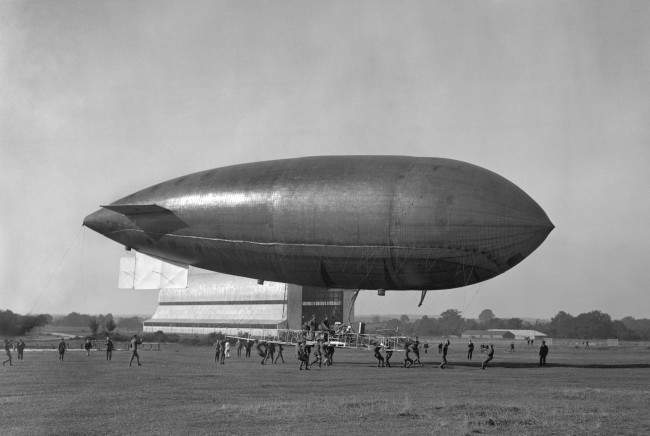
The Royal Flying Corp Airship ‘Beta’ at the HM Balloon Factory at Farnborough, Hampshire. It flew from the beginning of June, 1910 to July 13th, 1910 when she crashed at Andover.
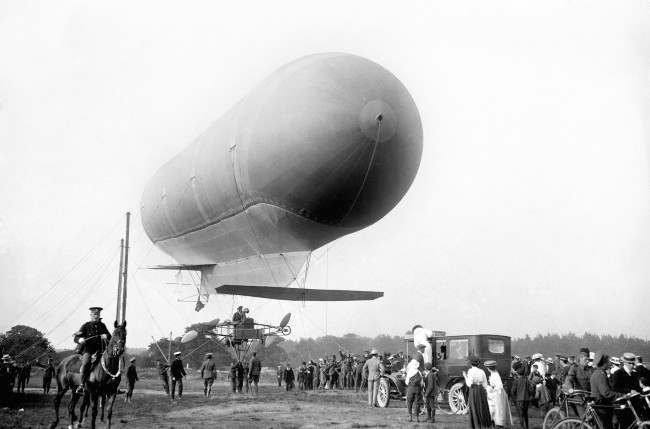
The Army Dirigible II.(Nulli Secundus II), which was partially made from her predecessor, Nulli Secundus I
This was the second time that the Nulli Secundus II had attempted to fly. This flight lasted only 15 minutes, due to a damaged water pipe, and the craft was never flown again.
Date: 14/08/1908
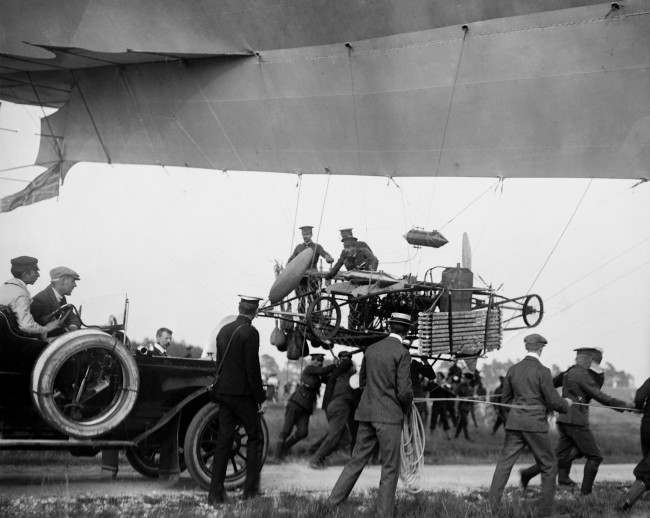
Army Dirigible No. 2, known as The Nulli Secundus II, about to take off. Parts of the crashed Nulli Secundus I were used in this airships construction, but the ship proved to be as fragile as its predecessor and was only flown the once.
Date: 01/07/1908
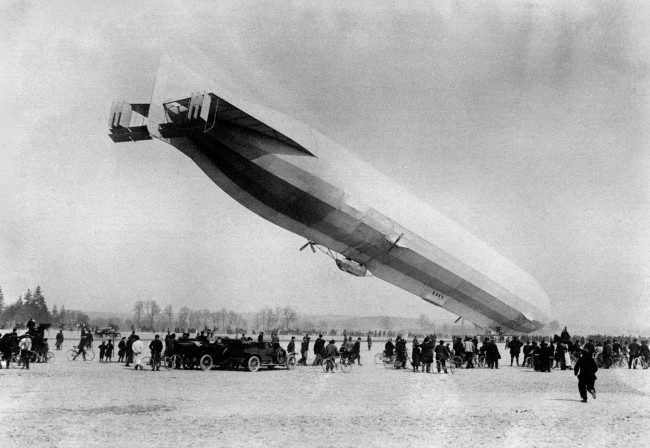
The German Army Zeppelin LZ-16 (Z-IV)under the command of Oberleutnant Jacobi, which had strayed of course, due to bad weather, into French territory, coming down to land voluntarily at Luneville.
Date: 14/03/1913

On this day in 1915, the first german Airship raid on the mainland of Great Britain claims 4 lives.

The basement windows of a bombed house following a zeppelin raid, from which a woman and baby escaped.
Date: 01/01/1915
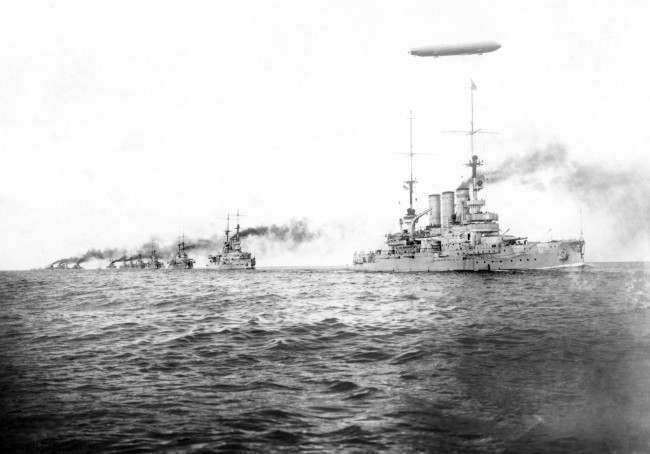
Airship Z.l accompanied the squadron led by ‘Preussen’. 1918.
Date: 01/01/1918
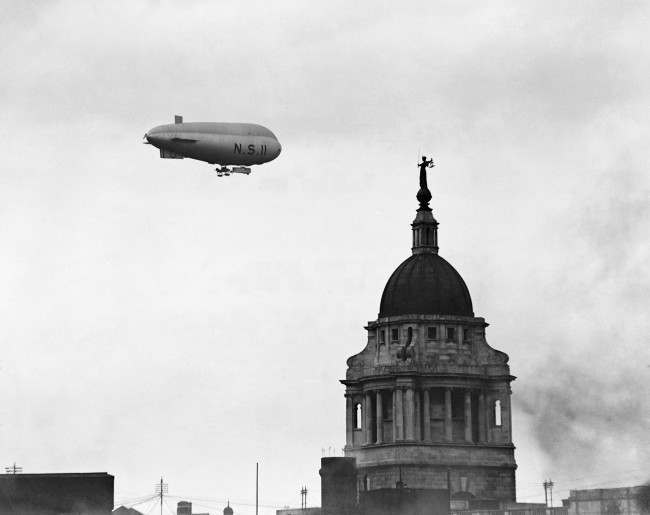
British airship NS11 flying over the Old Bailey in London. The airship crashed with the loss of all hands off the Norfolk coast on the 15th July 1919.
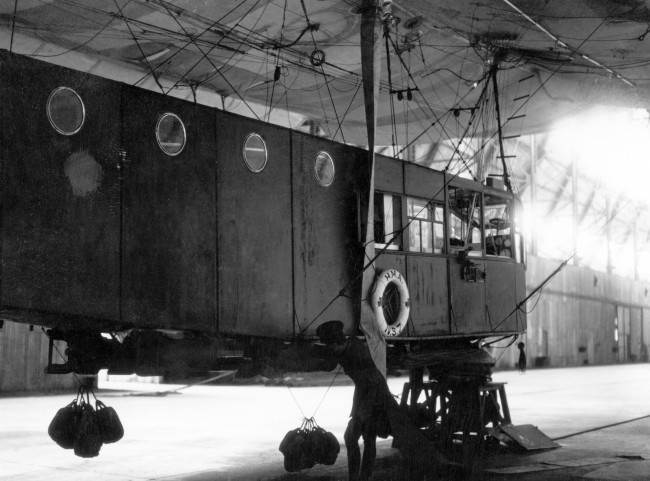
The loaded bomb rack of a large Coastal Airship used for bombing U-Boats.
Date: 01/01/1919
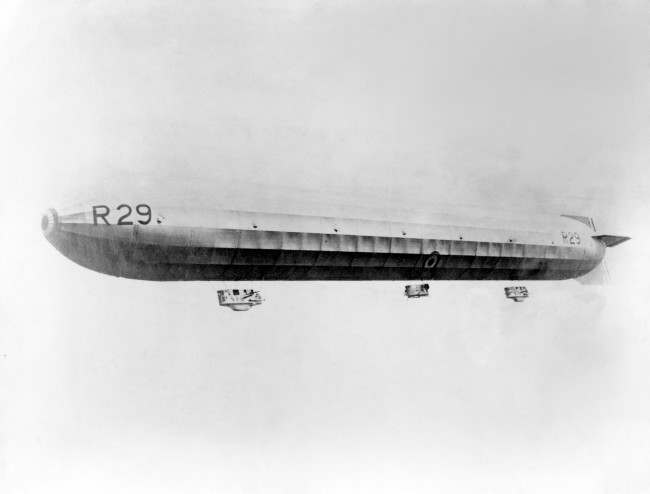
The R29 Airship in flight in 1919.
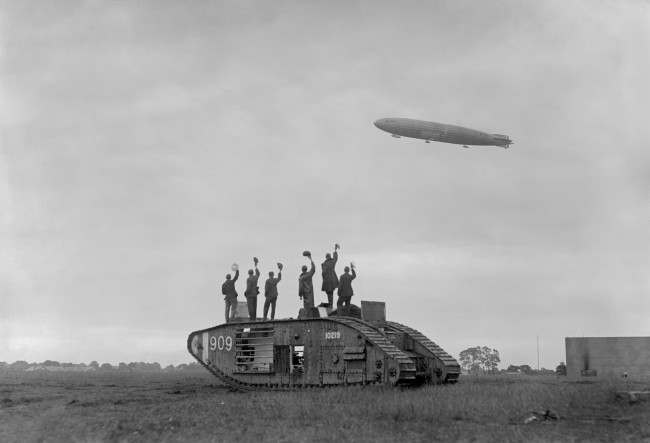
The Royal Navy Airship R34, returning from America to the aerodrome at Pulham, Norfolk, is cheered by British soldiers standing on a British Mark V tank. This was the first East-West crossing of the Atlantic and was done just two weeks after Alcock and Brown’s first ever trans-Atlantic flight.
Date: 13/07/1919
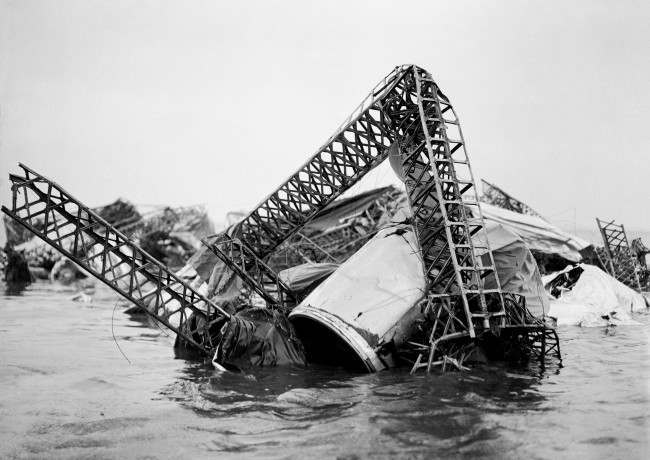
The scene of the airship disaster. The mass of tangled wreckage of the R38 (also known as ZRII) to be seen at low tide in the Humber Estuary. 27 Britons and 16 Americans were killed when the airship exploded during a trial flight over Hull on 24th August 1921.
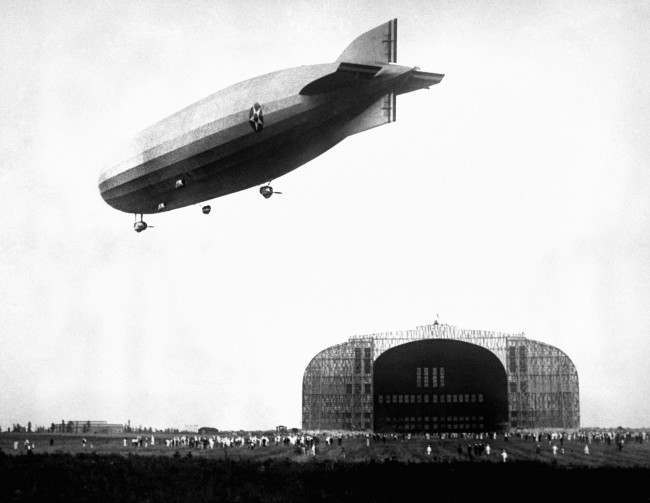
The USS Shenandoah,(ZR1) the world’s largest airship after having just left the giant shed at Lakehurst, New Jersey, USA.
Date: 17/01/1924
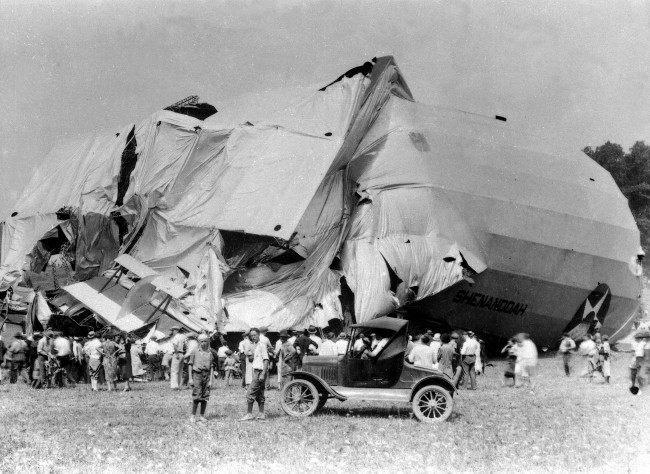
The airship USS Shenandoah lies in ruins in Caldwell, Ohio on Sept. 4, 1925. Fourteen crew members died and twenty-nine crew members survived the destruction of the airship which took off from Lakehurst, N.J., on Sept. 2. The Shenandoah was the first rigid dirigible made in America.
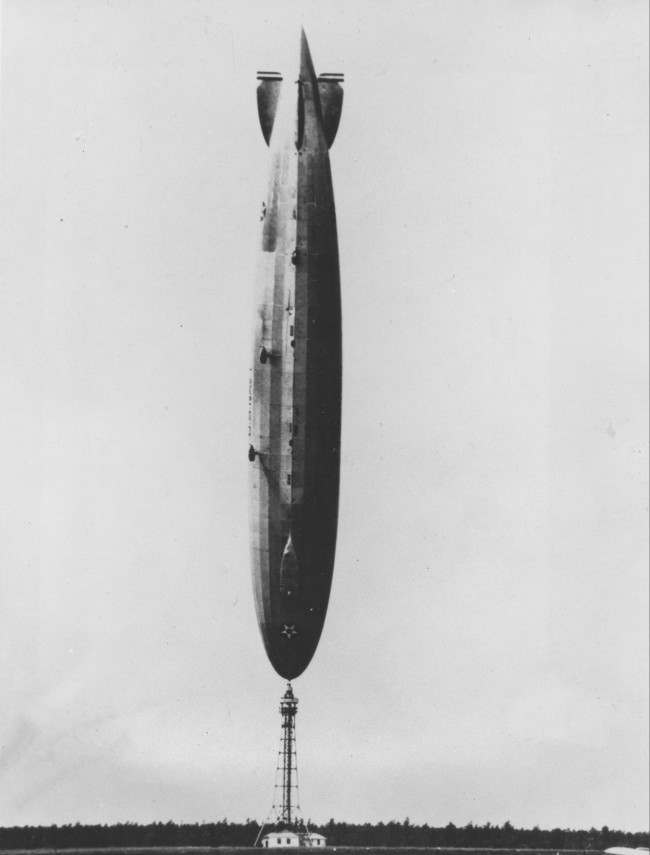
The U.S. Navy’s dirigible Los Angeles is shown upside down after a turbulant wind from the Atlantic flipped the 700-foot airship on its nose at Lakehurst, N.J., in 1926. The ship slowly righted itself and there were no serious injuries to the crew of 25.
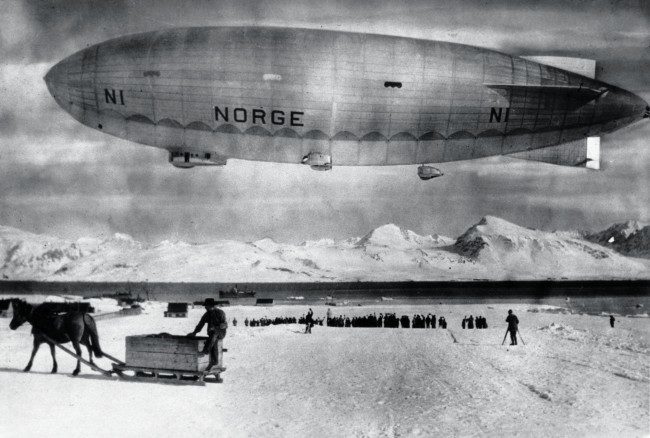
The airship Norge floats above Spitzbergen, Norway, in May 1926, before an expedition over the North Pole by Norwedian explorer Roald Amundsen. On May 11, 1926 Amundsen and his crew, including Italian Umberto Nobile who constructed and piloted ship departed in the Norge. Seventy-two hours later they landed at Teller, Alaska, becoming the first people to fly over the pole and confirming there was no land there.
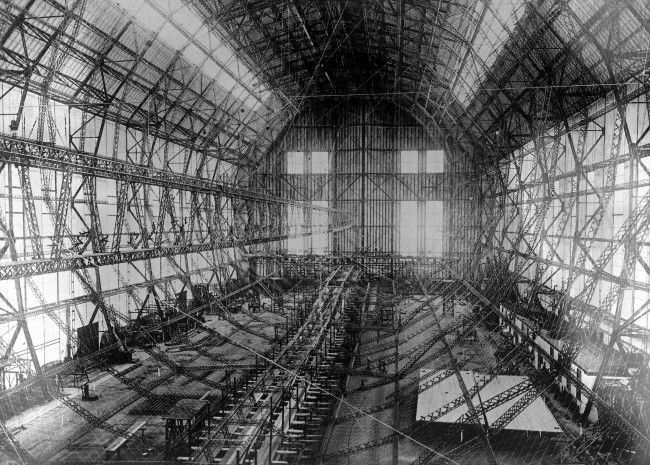
The construction of the largest airship, Z. 127 which was later named Graf Zeppelin, ever built is underway in the giant hanger at Friedrichshafen, Germany, Nov. 23, 1927.
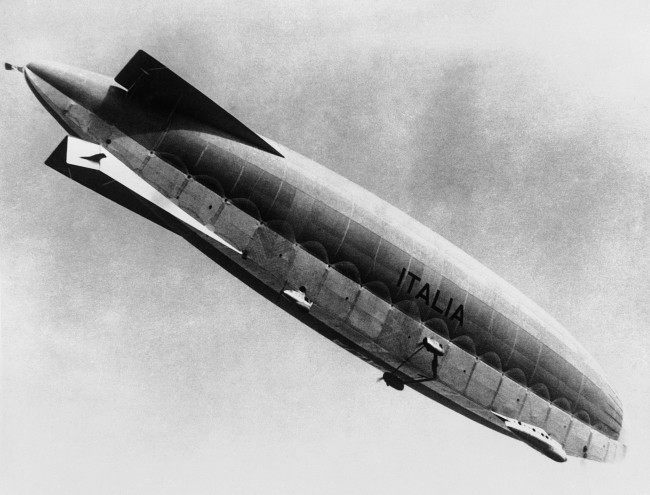
The Airship Italia, under the command of Italian General Umberto Nobile, left Stolp, on the coast of Pomerania, Germany, on the second stage of the flight from Italy to the North Pole. Every detail of the departure was described by wireless throughout Germany. The “Italia” in flight on May 3, 1928.
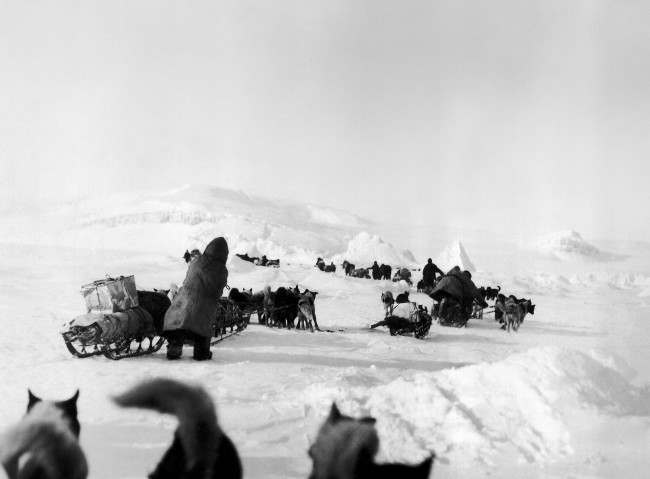
Following a crash of General Umberto Nobile’s airship Italia, rescue efforts are underway. This photo, taken by Anthony Fiala, explorer, shows dog travel in the region where NobileÂs party is down in the Franz Josef archipelago, Russia, June 16, 1928.
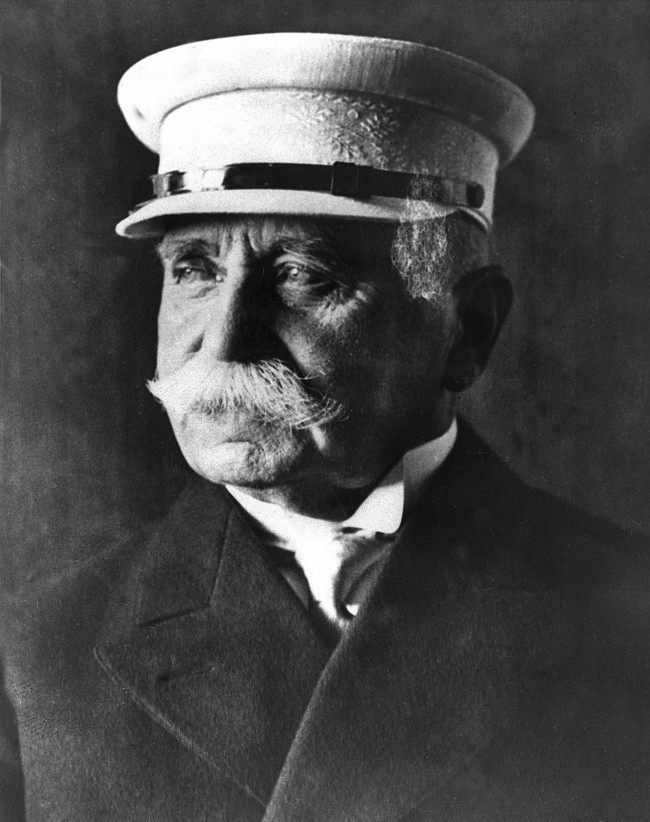
This is a 1929 photo of Ferdinand Graf von Zeppelin, a German military officer who developed the rigid airship, or dirigible, that bears his name.

The tail piece under construction of Britain’s new R101 airship at the Royal Airship Works at Cardington in Bedfordshire.
Date: 17/05/1929
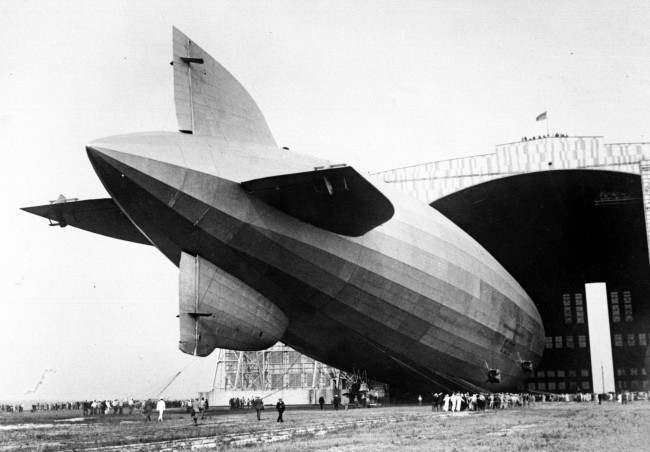
GRAF ZEPPELIN ANCHORS AT LAKEHURST AFTER HISTORY MAKING FLIGHT AROUND THE WORLD
Picture date: 1st Sept 1929.
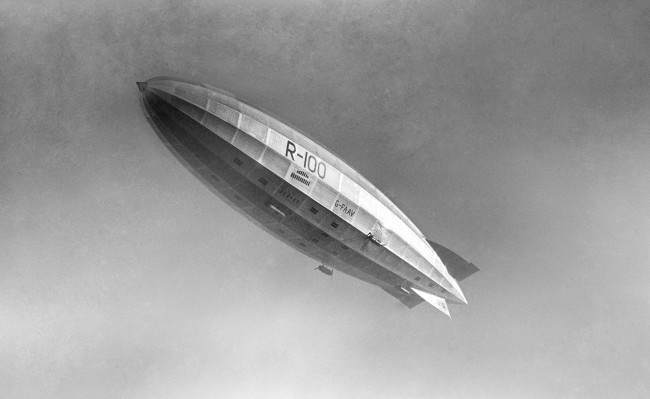
The R100 airship. Built in Howden, Yorkshire, and designed by Barnes Wallis, the design team also featured future novellist Nevil Shute Norway.
Date: 12/12/1929
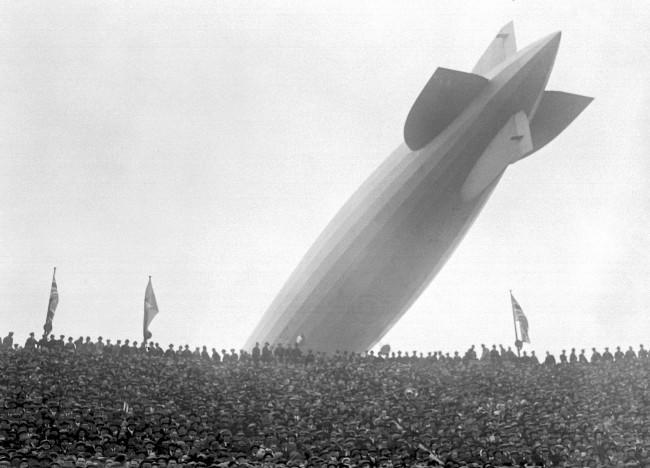
The last football game ever to played at the famous Wembley Stadium, with a match held between England and Germany. The Graf Zeppelin Airship flying over a section of the F.A. Cup final crow at Wembley Stadium in London. It was announced that Wembley would be the site for the new national stadium. Date: 26/04/1930
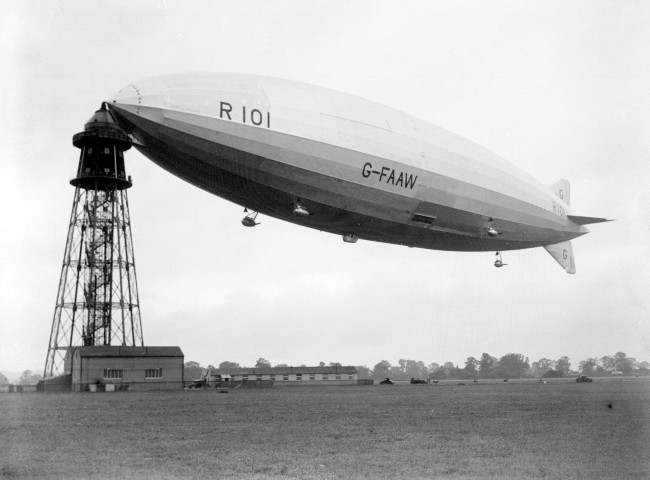
5TH OCTOBER: ON THIS DAY IN 1930 THE BRITISH AIRSHIP R.101 EXPLODES WHILST MOORING IN FRANCE PA NEWS PHOTO 1/10/30 THE R.101 ZEPPELIN AIRSHIP AT THE MOORING MAST AT CARDINGTON
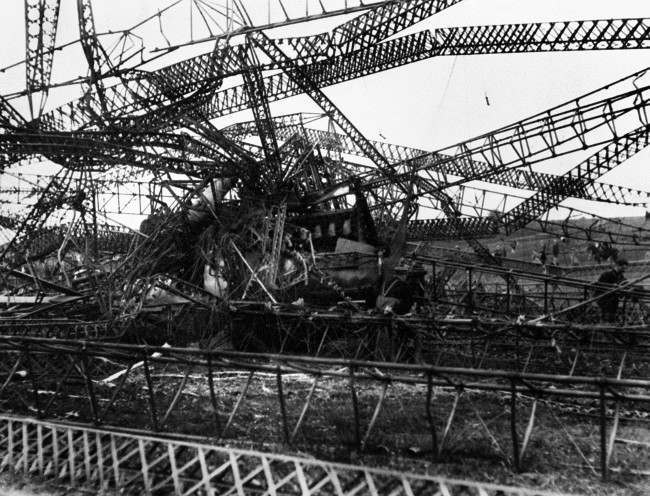
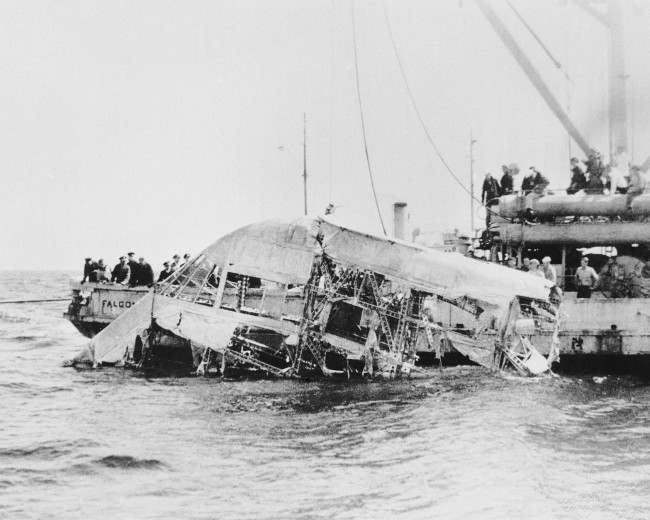
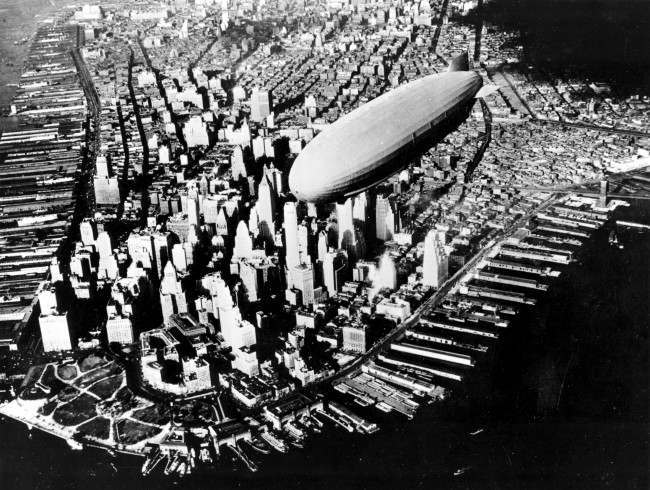
– In this Nov. 2, 1931 file photograph, the USS Navy Air Cruiser Akron flies over lower Manhattan’s financial district in New York City. The Akron went down in a violent storm off the New Jersey coast. The disaster claimed 73 lives, more than twice as many as the crash of the Hindenburg, four years later. The USS Akron, a 785-foot dirigible, was in its third year of flight when a violent storm sent it crashing tail-first into the Atlantic Ocean shortly after midnight on April 4, 1933
THE SHIP
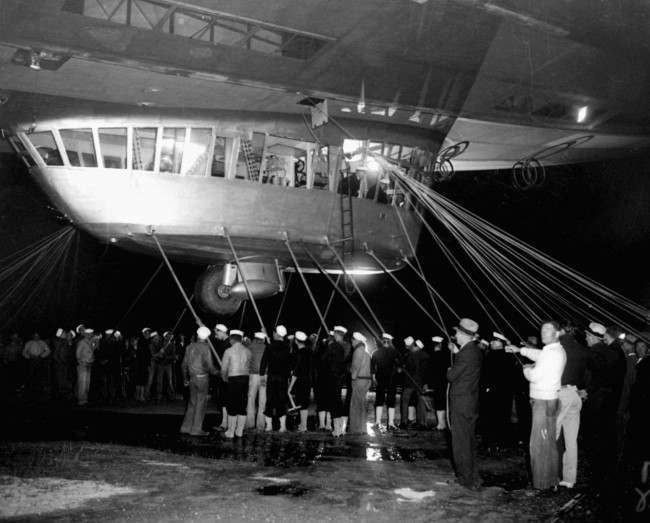
Spectators and ground crew surround the gondola of the German zeppelin Hindenburg as the lighter-than-air ship prepared to depart the U.S. Naval Station at Lakehurst, NJ,on its return trip to Germany.
May 11th, 1935,
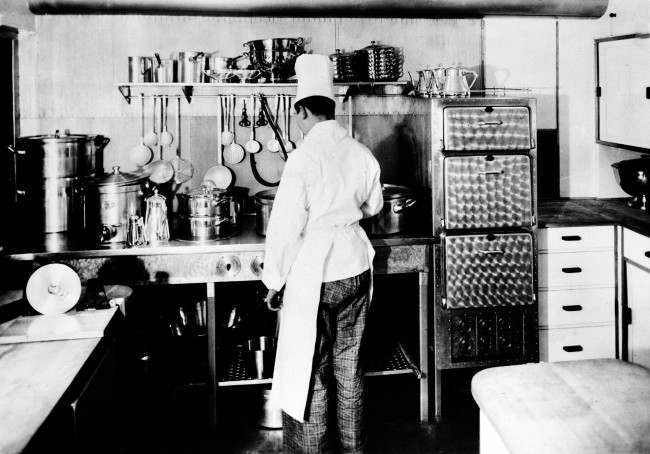
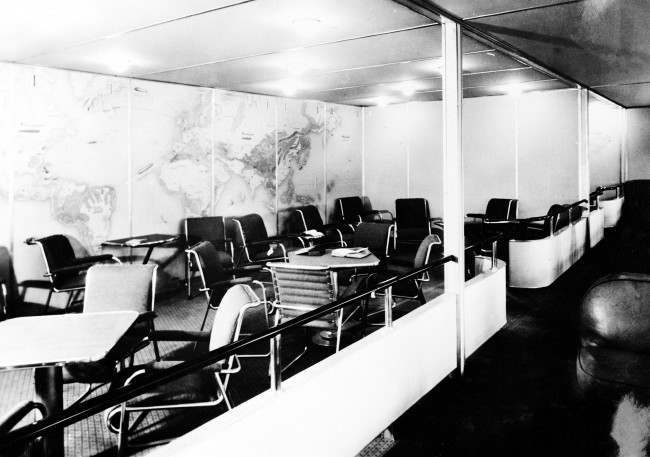
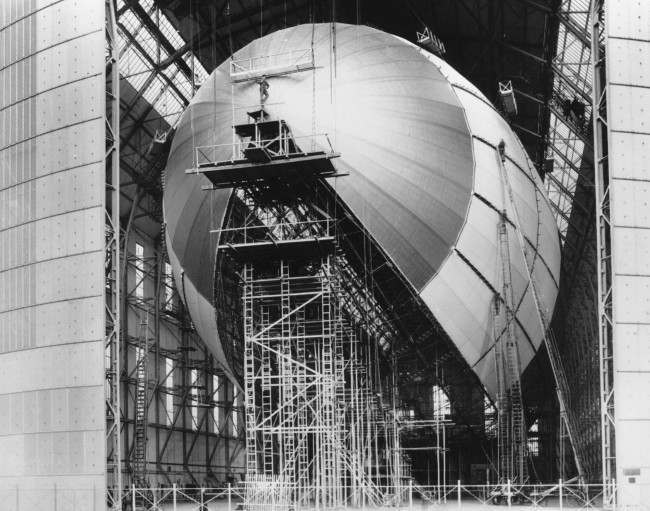
The dirigible Hindenburg is shown in its final stages of construction in Friedrichshafen, Germany, on March 6, 1936. The town of Friedrichshafen became famous as the home of one of aviation’s most colorful pioneers _ Count Ferdinand von Zeppelin _ who founded the Zeppelin airship company. His first dirigible flew in 1900, and the company also constructed the ill-fated final ship _ the Hindenburg that crashed in 1937 in Lakehurst, New Jersey.
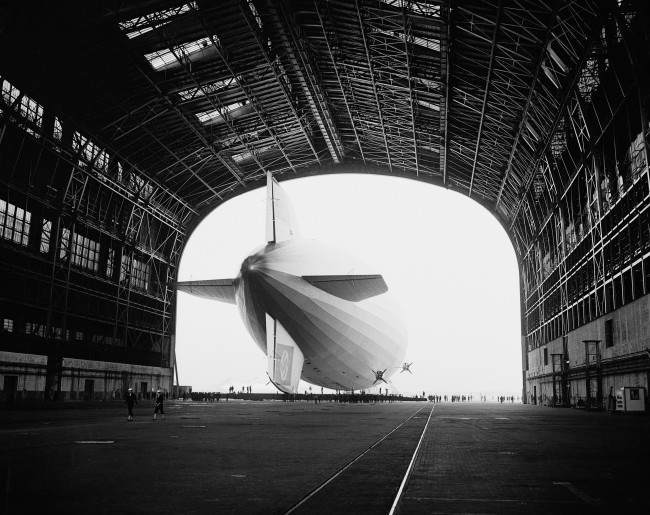
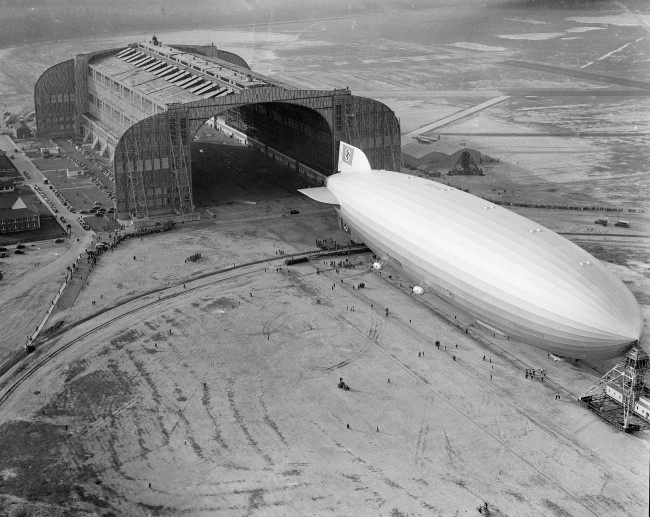
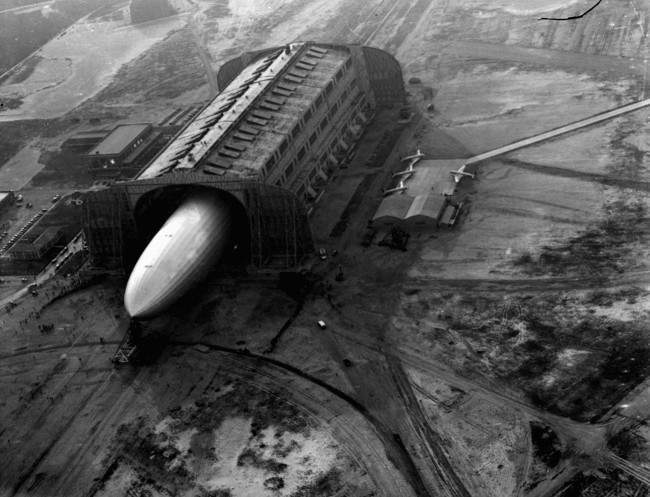
The German zeppelin Hindenburg, its nose hooked to a mooring mast, is guided into a U.S. Navy dirigible hangar in Lakehurst, NJ, May 9, 1936, after the first leg of 10 scheduled round trips between Germany and the U.S.
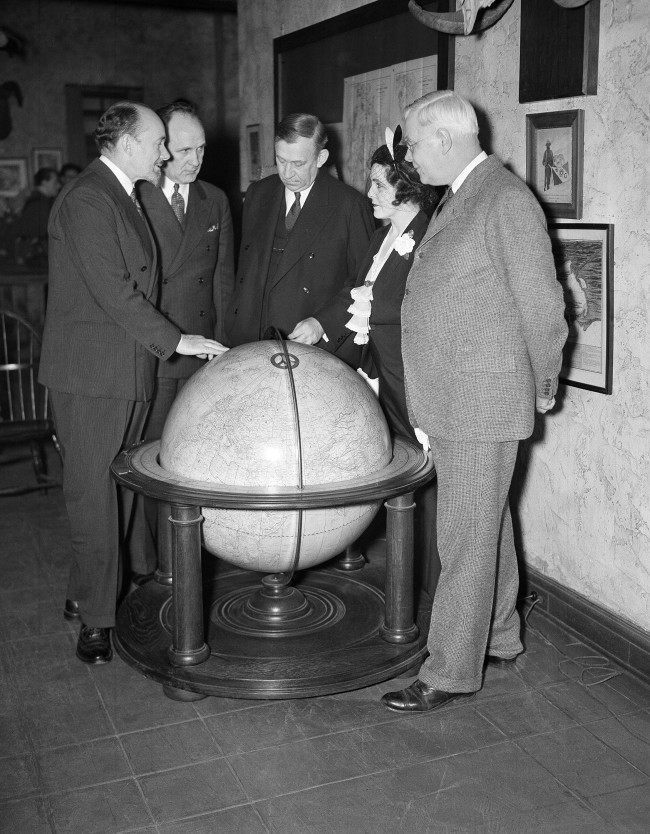
Left to right: Sir George Hubert Wilkins, explorer and writer; Joseph Robinson, secretary of the Explorers Club; Walter Granger, president of club; Lady Grace Drummond Hay, writer; and Dr. H. J. Spinden, director of the Brooklyn Museum, study the route of the Zeppelin HindenburgÂs flight to America on a globe at the Explorers’ Club in New York on May 10, 1936.
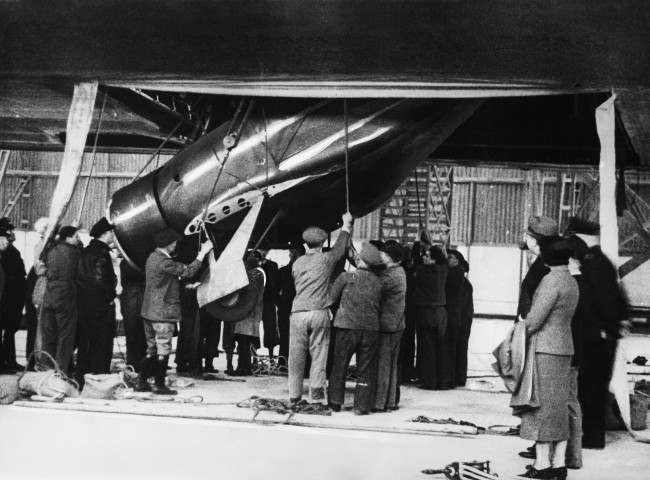
Members of the crew of the Hindenburg are unloading the plane of Jimmy Haizlip in Frankfurt, Germany on June 1, 1936 which was freighted to Germany on the Hindenburg’s second flight from the United States.
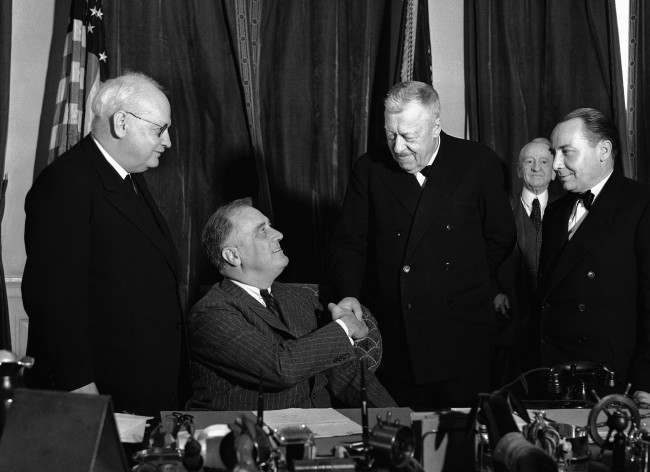
President Franklin D. Roosevelt receives Dr. Hugo Eckener, commodore of the Zeppelin fleet, at the White House in Washington and congratulates him on the Hindenburg’s swift voyage to America. Left to right are: Dr. Hans Luther, German Ambassador; President Roosevelt, Dr. Eckener and Capt. Ernst Lehmann, commander of the Hindenburg.
Date: 11/05/1936
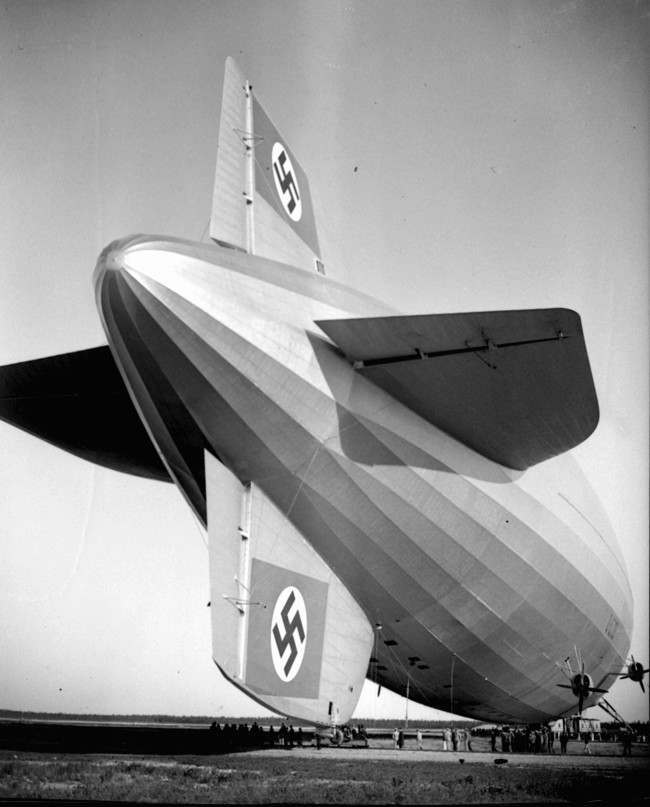
The German zeppelin Hindenburg is safely moored at the U.S. Naval Station in Lakehurst, NJ, after arrival on its second round trip between Germany and the U.S.
May 20th, 1936
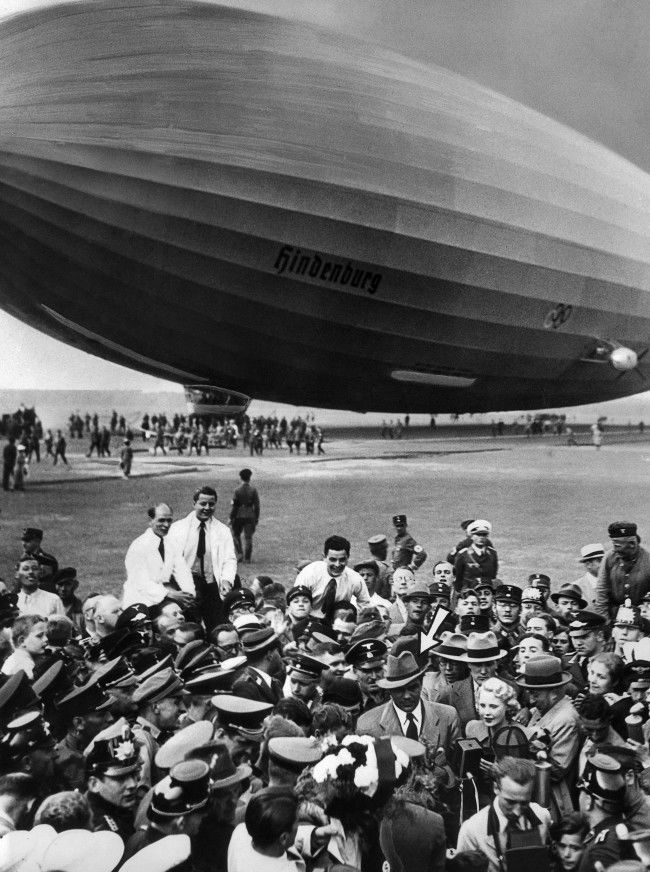
Max Schmeling, German heavyweight, (indicated by arrow) as he arrive in his homeland on the Zeppelin Hindenburg fresh from his defeat of Joe Louis, American boxer on July 2, 1936.
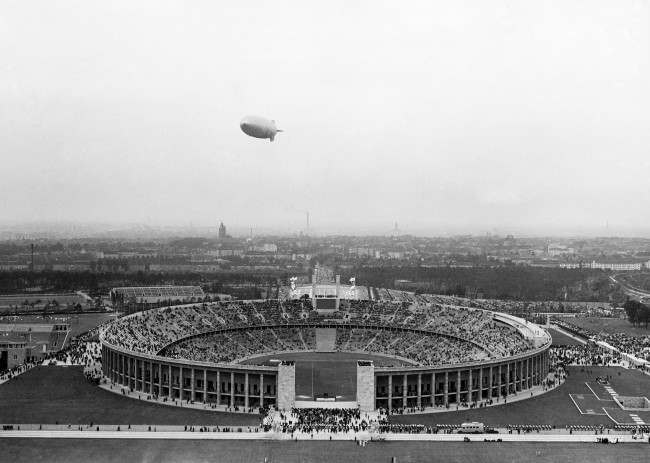
The German airship Hindenburg flies over the Olympic Stadium, outside Berlin, on August 1, 1936, during the opening ceremony of the Olympic Games.
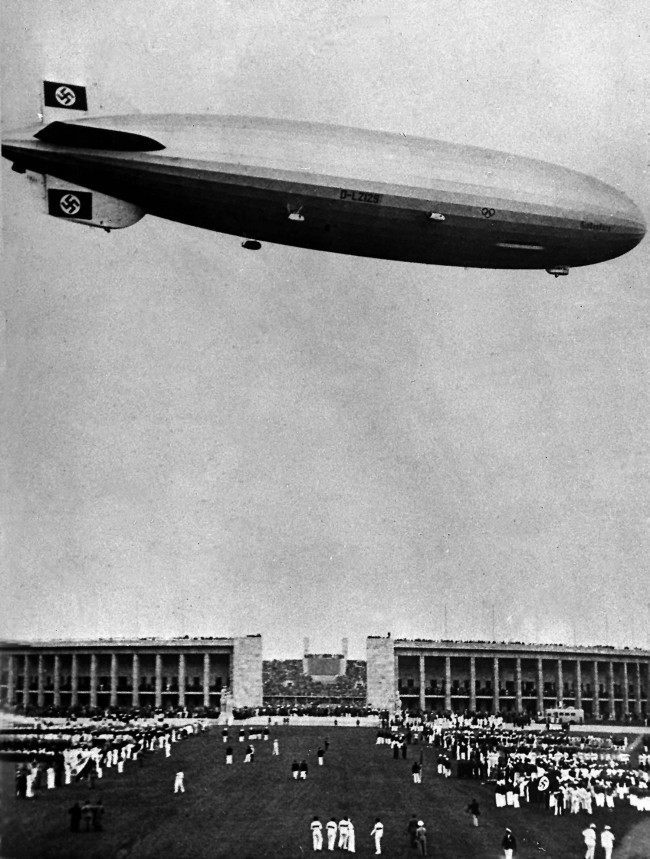
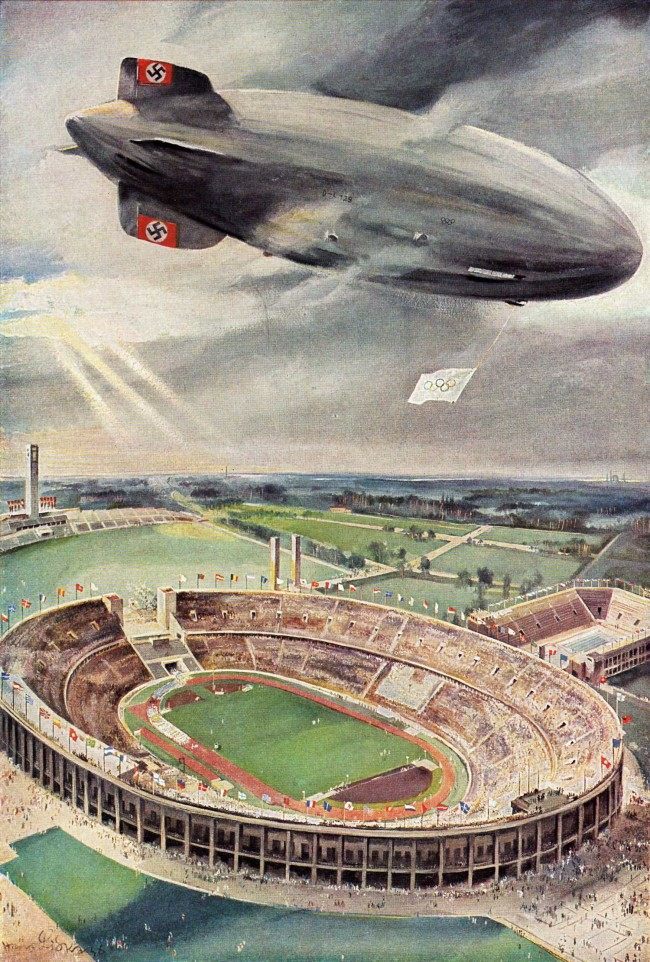
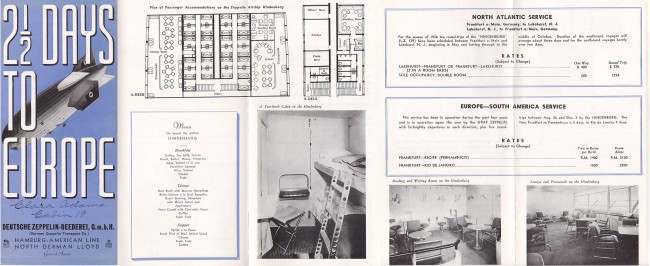
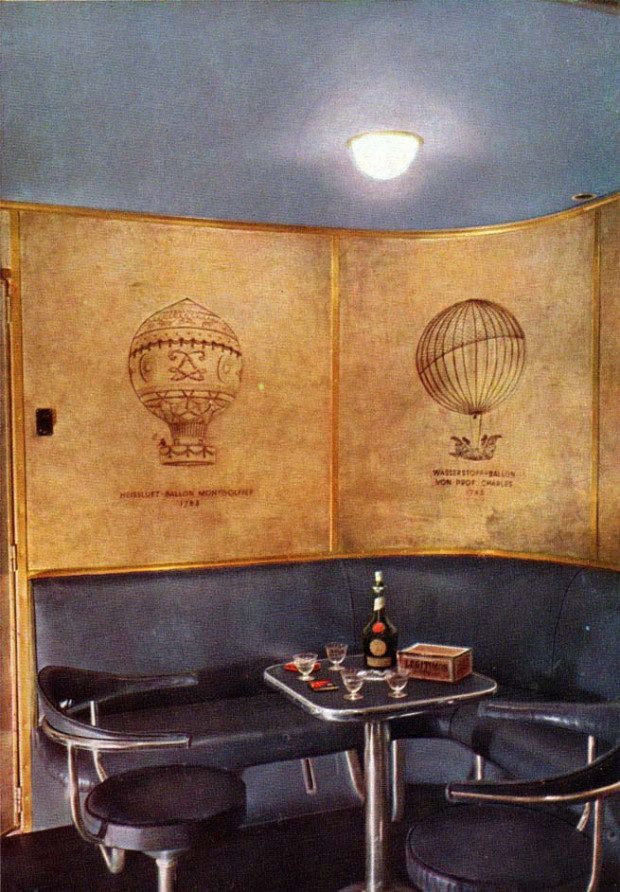
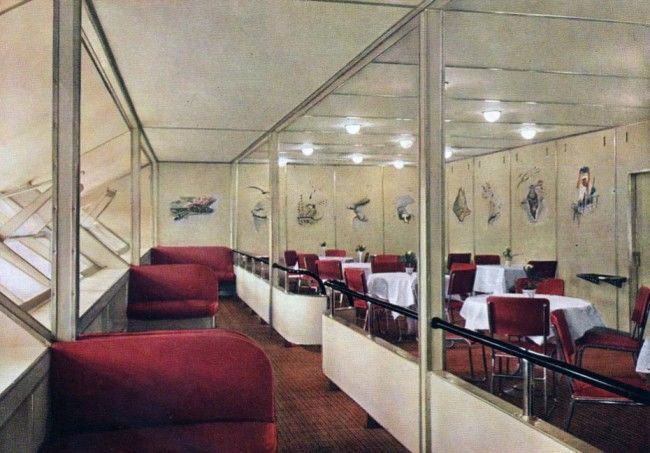
MAY 6
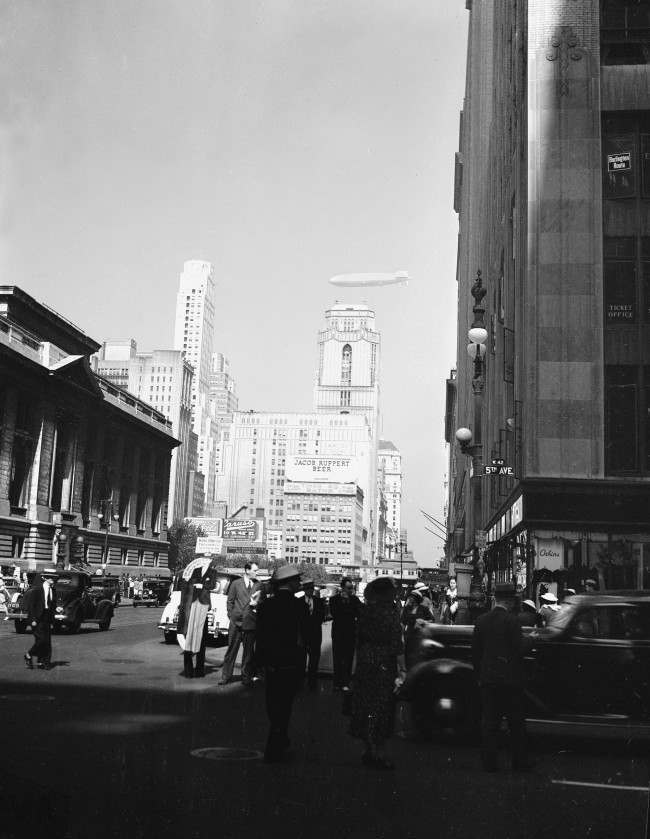
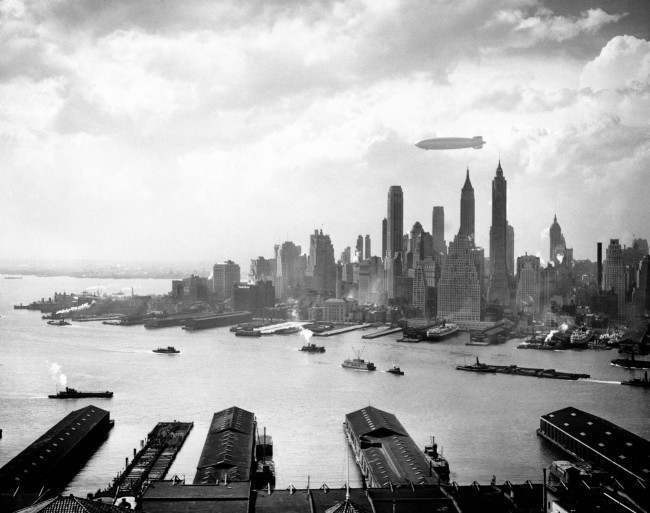
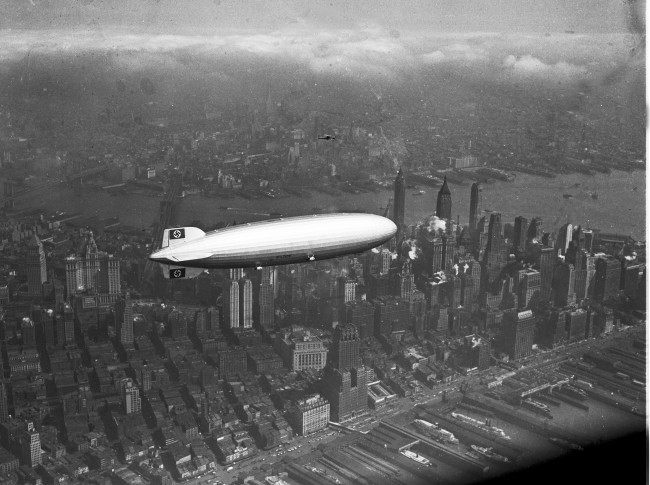
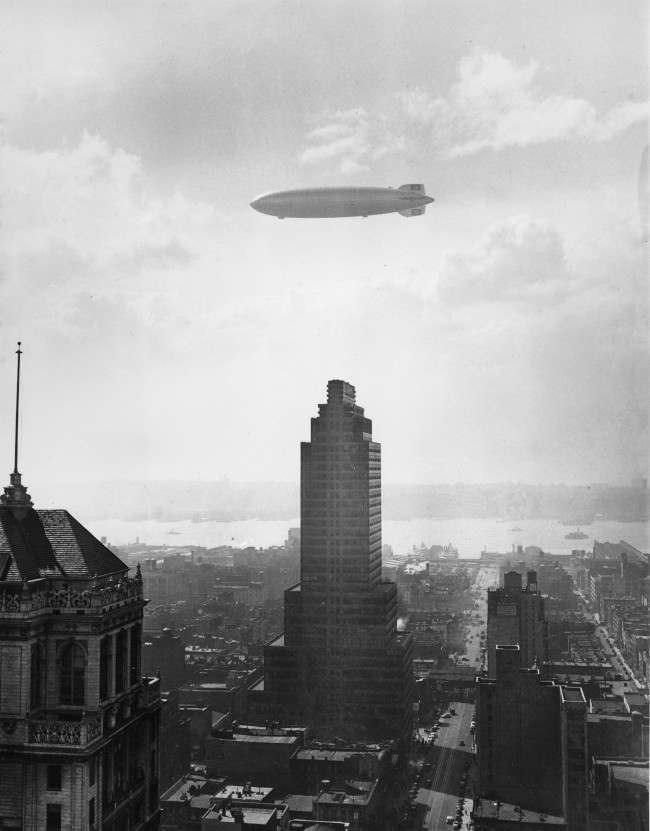
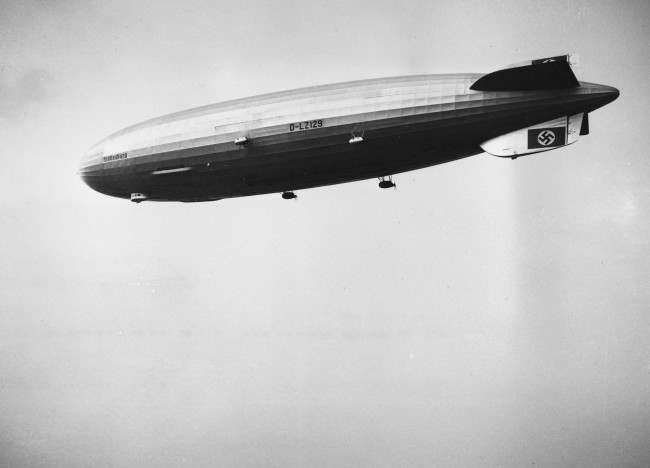
DISASTER
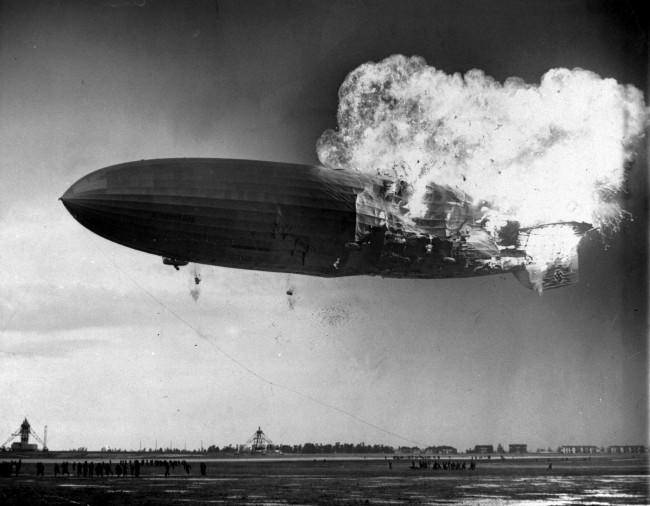

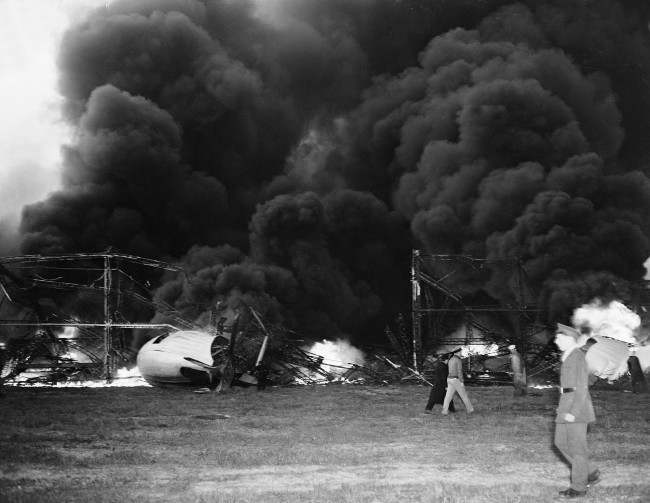
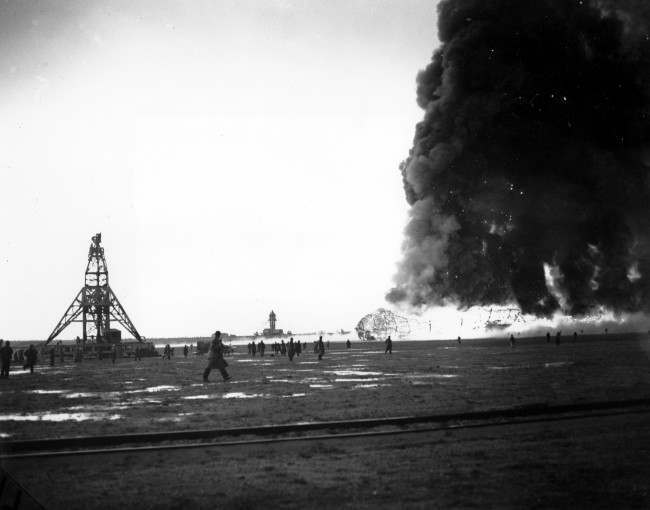
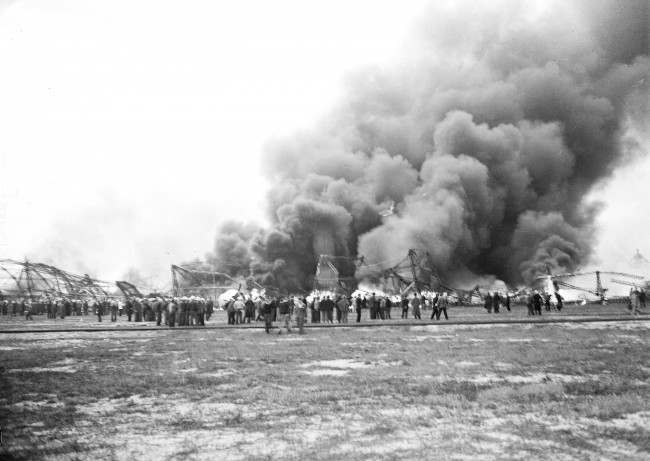
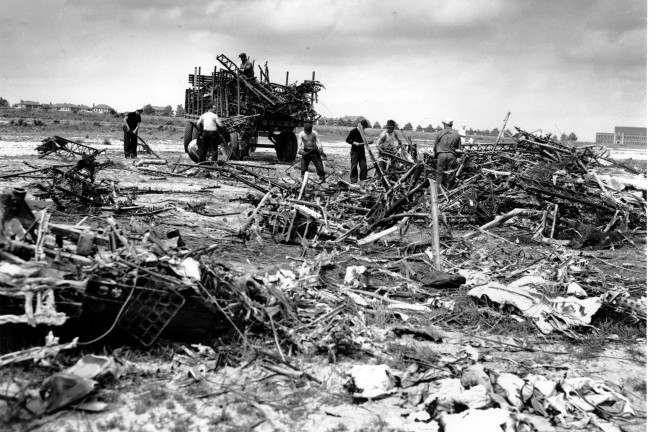
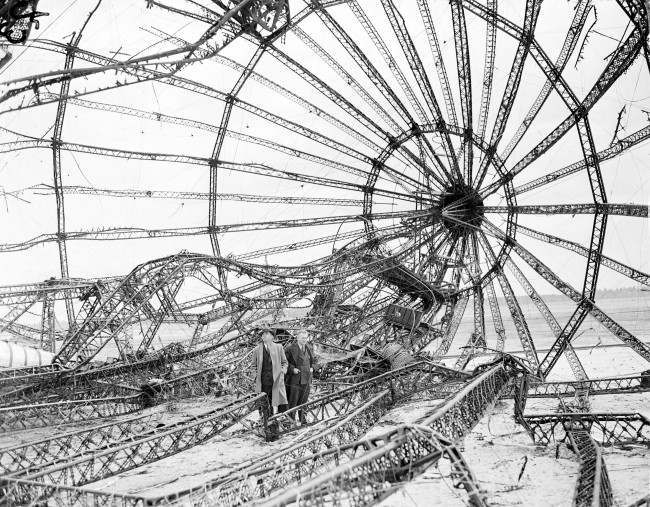
AFTER

Customs officers search through baggage items salvaged in the Hindenburg explosion in Lakehurst, N.J., May 6, 1937.
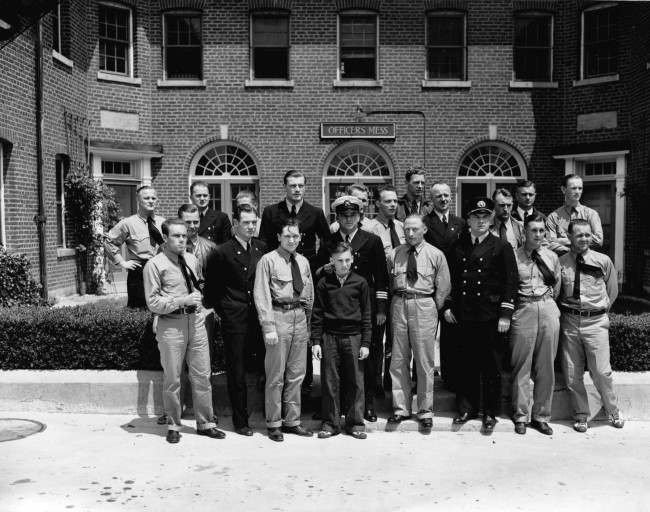
Surviving members of the crew aboard the ill-fated German zeppelin Hindenburg are photographed at the Naval Air station in Lakehurst, N.J., May 7, 1937. Rudolph Sauter, chief engineer, is at center wearing white cap; behind him is Heinrich Kubis, a steward; Heinrich Bauer, watch officer, is third from right wearing black cap; and 13-year-old Werner Franz, cabin boy, is center front row. Several members of the airship’s crew are wearing U.S. Marine summer clothing furnished them to replace clothing burned from many of their bodies as they escaped from the flaming dirigible.
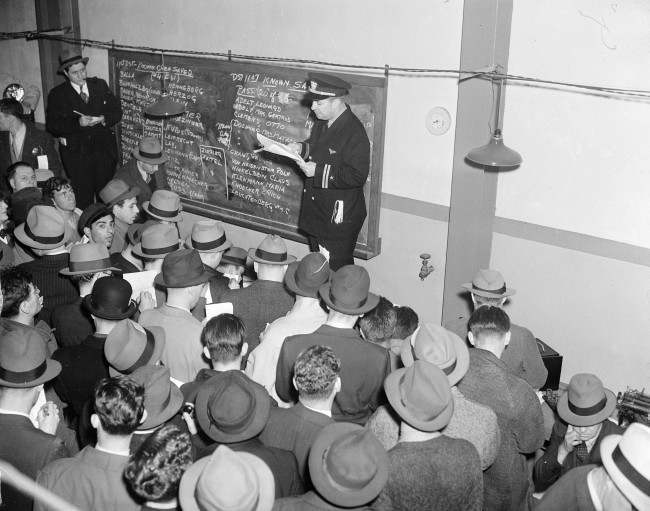
Relatives and friends of persons listed as missing in the Hindenburg disaster check the bulletin board on which the names of survivors are being added
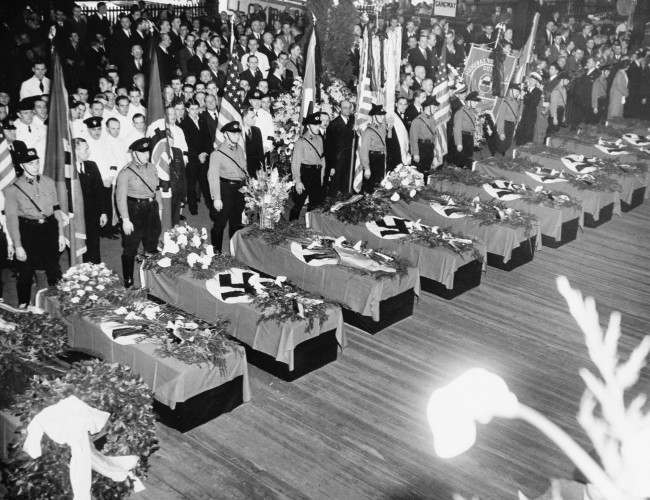
Funeral services for the 28 Germans who lost their lives in the Hindenburg disaster May 6 are held on the Hamburg-American pier in New York City. The swastika-draped caskets will be placed on board the Hamburg for their return to Europe. About 10,000 members of German organizations line the pier.

German Nazis give the salute as they stand beside the casket of Capt. Ernest A. Lehmann, former commander of the zeppelin Hindenburg, during funeral services held on the Hamburg-American pier in New York City.
THEN
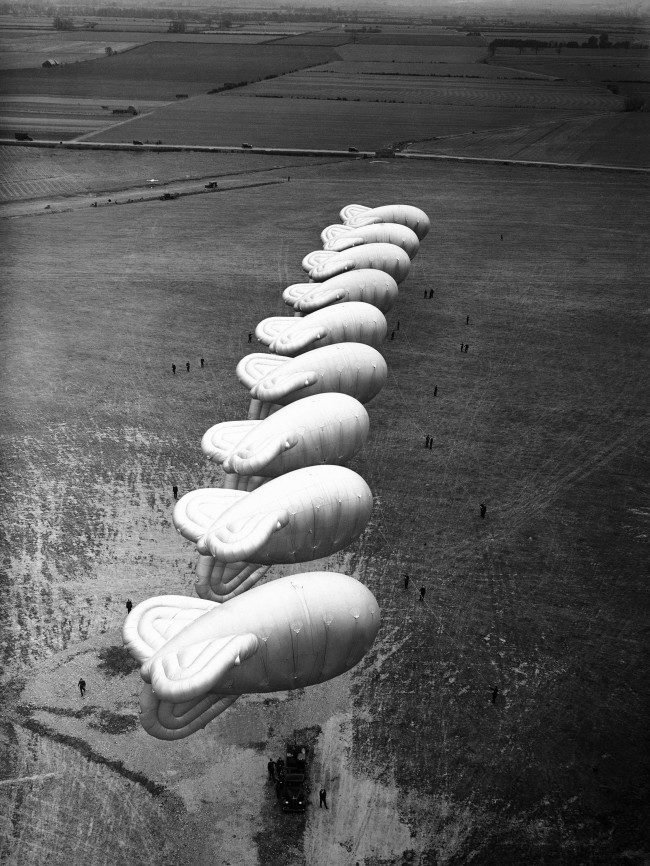
General view of balloons of the new balloon barrage groups of the Royal Air Force lined up in the air in Cardington, Bedfordshire, England on May 9, 1938. The balloons, attached to a great length of cable, ascend to an amazing height. The earth end of the cable is operated by a winch which can be mounted on a lorry to give the balloon mobility. Balloons, unused for air defence purposes since the war, will be used, if necessary for the protection of London from air attack. A number of these balloons will ascend from here on May 28, when Lord Luke, unseen, officially opens the empire air day.
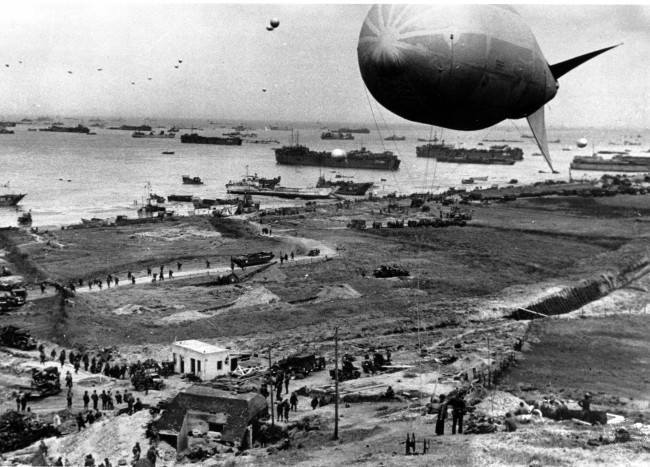
Allied materials of war, including amphibious “ducks” and other armored vehicles, fills an invasion beach on the Normandy coast of France, protected by barrage balloons during World War II. The balloons also hover over ships anchored off shore waiting their turn to unload the reenforcement supplies
June 18th, 1944
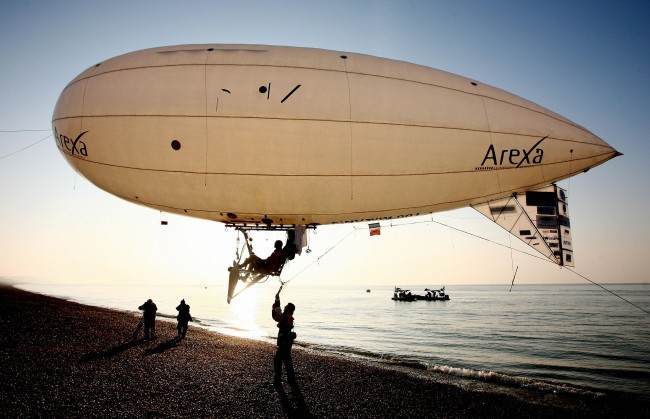
Sunday September 28, 2008. The French adventurer inspired by the classic film ET today set off on his attempt to become the first person to cross the English Channel in a pedal-powered airship. Stephane Rousson, 39, from Nice, took off from the coast of Hythe in Kent just before 8am and hopes to reach Wissant about five hours’ later while suspended from the miniature Zeppelin.
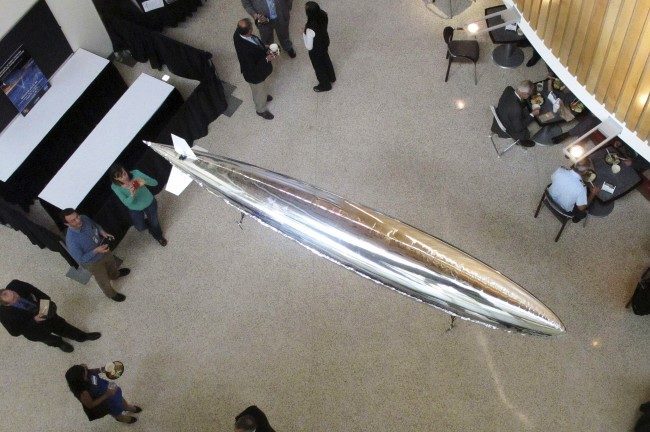
Senior aerospace engineer Johannes Eissing pilots an Airship Ventures experimental remote command airship over the heads of participants of the second Cargo Airships for Northern Operations Workshop, Wednesday, Aug. 22, 2012, at the University of Alaska Anchorage in Anchorage, Alaska. Lighter-than-air aircraft advocates say such vessels may one day be a common sight, delivering fuel or construction material to remote Alaska villages or food to hungry people on another continent.
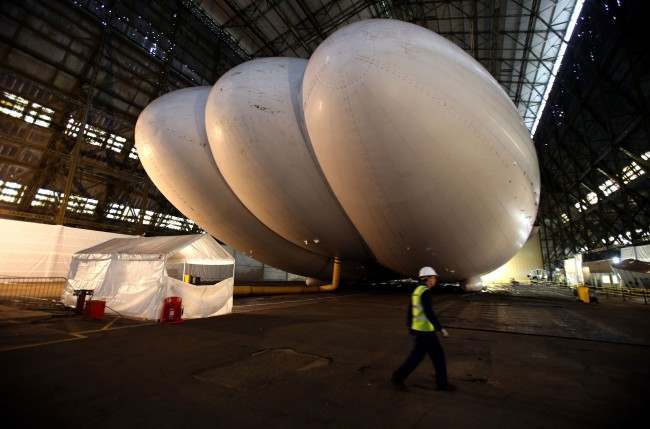
A workman walks past the world’s largest aircraft known as the HAV304, at its launch at Cardington Hanger in Bedfordshire.
Picture date: Friday February 28, 2014.
Would you like to support Flashbak?
Please consider making a donation to our site. We don't want to rely on ads to bring you the best of visual culture. You can also support us by signing up to our Mailing List. And you can also follow us on Facebook, Instagram and Twitter. For great art and culture delivered to your door, visit our shop.










